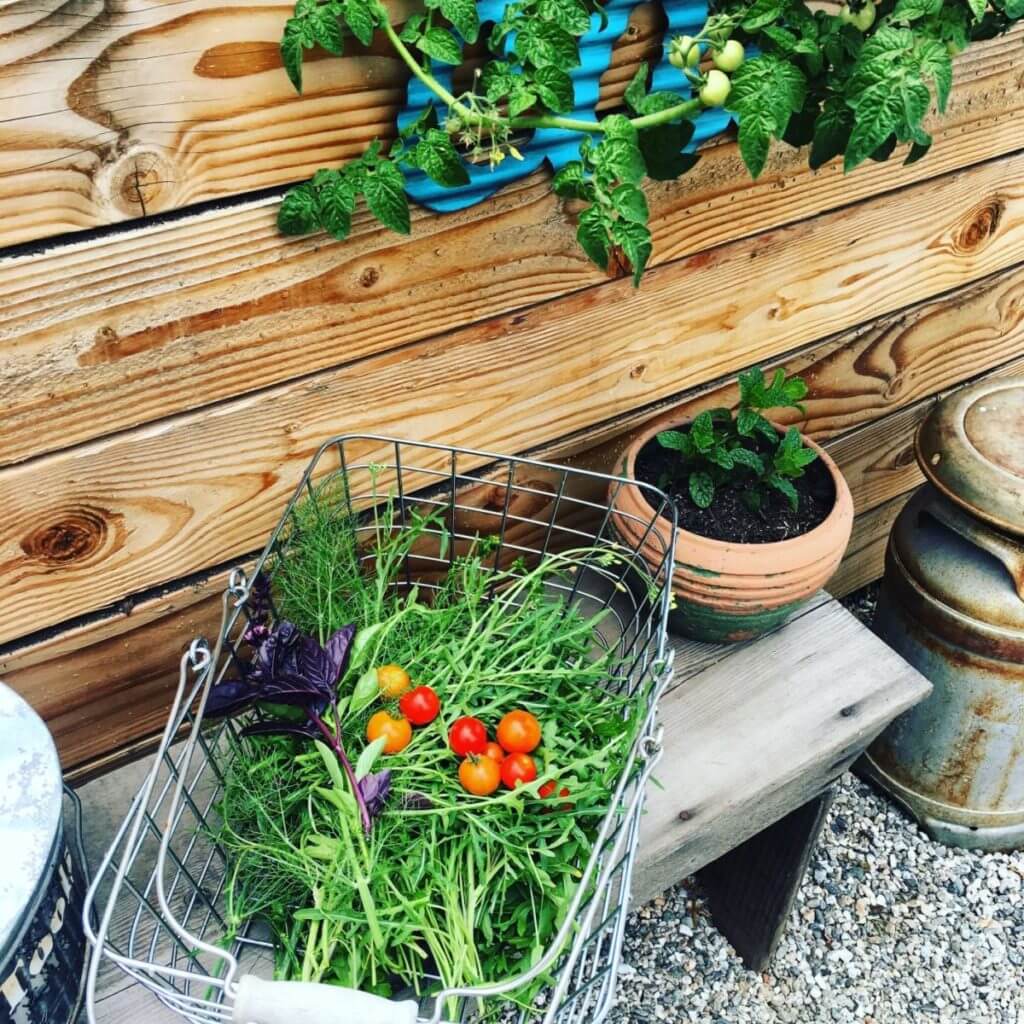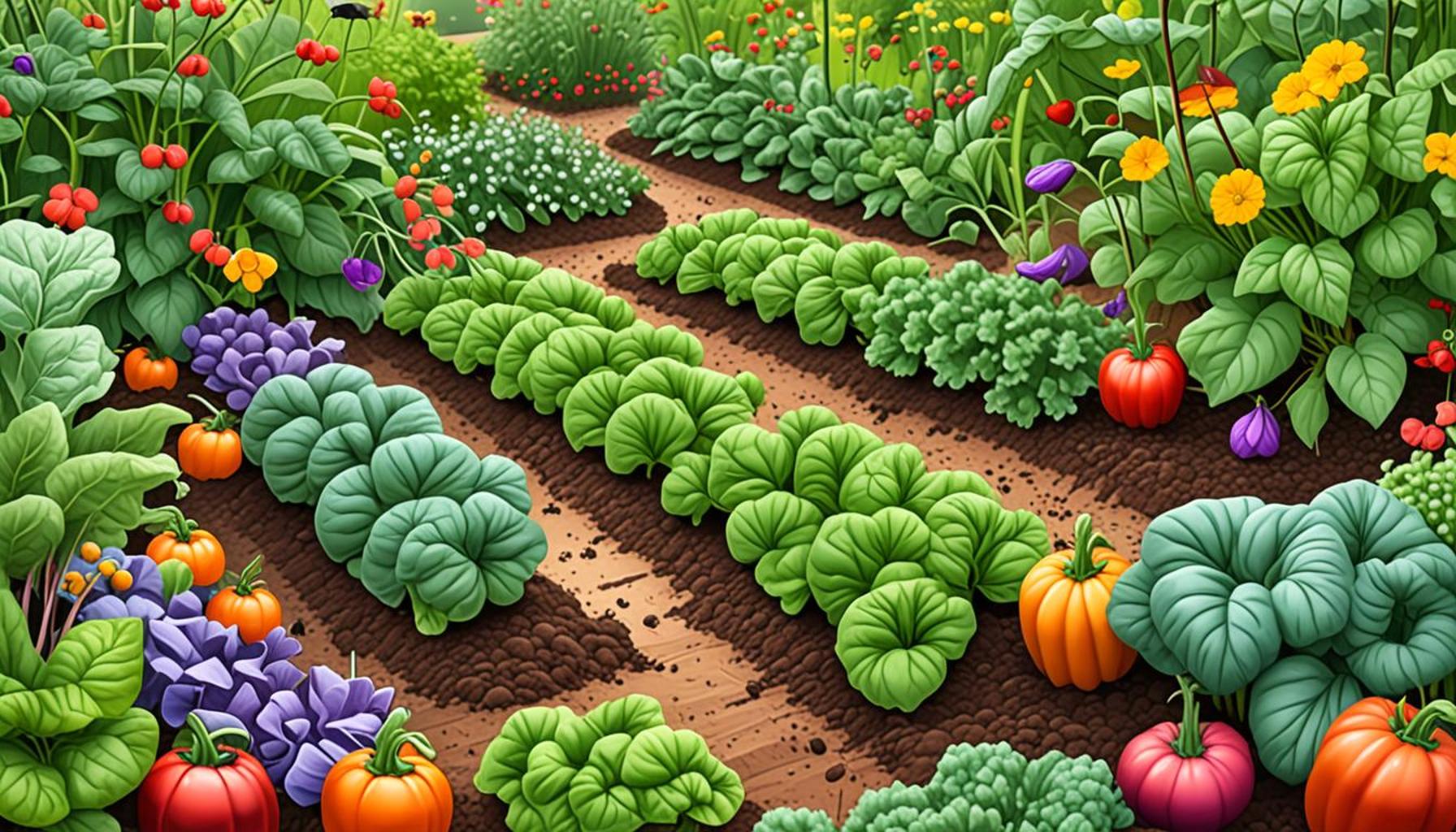Vegetable Gardening in Containers: A Practical Solution for Beginners

Unlocking the Benefits of Container Gardening
Have you ever thought about starting your own vegetable garden, but felt limited by space or experience? Container gardening offers a solution for those eager to grow fresh produce right at home. This method is particularly appealing for beginners looking to dive into the world of gardening without extensive backyard space.
Vegetable gardening in containers provides several advantages that can make the experience rewarding and enjoyable:
- Accessibility: No need for a traditional garden bed; pots can be placed on balconies, patios, or even windowsills. This flexibility allows urban dwellers without yards to participate in sustainable food production. For example, if you live in a city apartment, a sunny balcony can be a perfect spot for your leafy greens.
- Control over soil quality: You can choose the right soil mix tailored to the specific needs of your plants. By selecting organic potting soil enriched with compost or fertilizers, you ensure optimal growth conditions. This is especially beneficial if your native ground soil lacks nutrients or if you are concerned about contamination.
- Versatility: Grow a variety of vegetables from tomatoes and peppers to herbs and greens, all in different sized containers. Containers come in various shapes and sizes, from small herb pots to larger tubs for deep-rooted vegetables. You can even experiment by creating a vertical garden with tiered pots to maximize space.
- Less weeding: Containers minimize weeds and pests, making maintenance simpler. With less competition from weeds and reduced exposure to ground-dwelling pests, you can focus more on nurturing your plants. Regularly checking your containers allows for proactive pest management, ensuring your harvest remains healthy.
Additionally, gardening in containers can be an effective way to introduce children and newcomers to the joys of growing food. It encourages healthy eating habits and provides a sense of accomplishment as they watch their hard work transform into fresh vegetables on their plates. Engaging kids in this hands-on activity can foster an appreciation for nature, horticulture, and sustainability.
As interest in vegetable gardening continues to rise, especially amid growing concerns about food sustainability, container gardening stands out as a manageable way to contribute. According to reports, the popularity of home gardening surged significantly during the pandemic, as many sought to enhance self-sufficiency and spend more time outdoors. This trend reflects a broader commitment to understanding where our food comes from.
Ready to discover how to get started? In the following sections, we will explore essential tips, ideal vegetables for beginners, and best practices to ensure your container garden flourishes. From selecting the right containers and understanding irrigation needs, to harvesting your crops, there are countless opportunities to grow your green thumb and cultivate a sense of pride in your gardening achievements.

DISCOVER MORE: Click here for essential gardening tips
Getting Started: Selecting the Right Containers and Soil
As a beginner in vegetable gardening in containers, knowing how to start is crucial. The beauty of container gardening lies not only in its accessibility but also in the variety of options it presents for plant selection and arrangement. However, starting off on the right foot requires careful thought about the containers and suitable soil for your chosen vegetables.
When selecting containers, consider the following factors that can impact your plants’ growth:
- Size: The size of your container will depend on the type of vegetable you want to grow. Shallow-rooted plants, such as lettuce and herbs, thrive in smaller pots, while deeper-rooted vegetables, like carrots or tomatoes, require larger containers to accommodate their growth. A good rule of thumb is to choose containers that are at least 6 to 12 inches deep for most vegetables.
- Material: Containers come in a range of materials including plastic, terracotta, ceramic, and metal. Each material has its advantages. For instance, plastic pots are lightweight and retain moisture well, making them great for beginners. Terracotta pots, while beautiful, can dry out quickly and may require more frequent watering. Consider the material based on your climate and how much time you can dedicate to care.
- Drainage: Proper drainage is essential for container gardening. It’s important to ensure that your pots have drainage holes at the bottom to prevent water from accumulating, which can lead to root rot. If you’re using a container without drainage holes, consider placing a layer of small stones at the bottom to help with excess moisture.
Next to containers, choosing the right soil mix is vital for your vegetables’ success. Instead of using garden soil, it’s best to opt for a high-quality organic potting mix. This special mix is designed to encourage drainage and provide nutrients. Many commercially available potting soils also contain added elements like perlite or vermiculite, which help keep the soil aerated and enhance water retention—two features particularly beneficial for container plants.
While engaging with the soil, take the time to understand your vegetables’ specific needs. Some crops, such as tomatoes, thrive in nutrient-rich soil, whereas others, like root vegetables, prefer a lighter mix that allows room for growth. If you’re unsure, many gardening resources are available online or at local garden centers that can provide guidance tailored to your specific plants.
As you embark on your vegetable container garden journey, remember to acclimate your greenery to their new environment carefully. Start with just a few plants, which will help you learn the intricacies of container care without becoming overwhelmed. Maintaining an eye on light, water, and nutrients will enable you to develop a deeper understanding of your plants, ultimately leading to a successful harvest.
In the next section, we will delve into which vegetables are best suited for container gardening and how to strategically arrange them for optimal growth, ensuring you maximize the potential of your container garden.
| Advantages | Description |
|---|---|
| Space Efficiency | Container gardening allows for maximum use of limited space, ideal for urban settings. |
| Accessibility | Containers can be placed anywhere, making it easier for beginners to cultivate fresh produce. |
| Soil Control | Using containers allows gardeners to create and control optimal soil conditions for different plants more easily. |
| Aesthetic Appeal | Containers can enhance landscape beauty, providing both function and style to outdoor spaces. |
Container gardening is not just practical; it opens up a world of possibilities for even the most novice gardeners. With the right approach, you’ll soon find that vegetable gardening in containers can be a fulfilling and productive venture. Each of these advantages underscores the practicality of this gardening method and encourages individuals to start their own productive garden, tailored to their specific space and lifestyle. Whether dealing with a small balcony or a spacious patio, container gardening indeed transforms whatever space you have into a flourishing urban farm.
DISCOVER MORE: Click here to learn how to choose the right organic seeds for your climate
Choosing the Right Vegetables for Your Container Garden
Now that you have your containers and soil prepared, the next exhilarating step in your journey with vegetable gardening in containers is selecting the right vegetables to grow. The beauty of container gardening is that you can cultivate a variety of vegetables in limited space, making it a perfect solution for urban dwellers or those with small backyards. However, not all vegetables are equally suited to this method, and understanding the needs of each type will maximize your success.
Some of the best vegetables to grow in containers include:
- Leafy Greens: Vegetables such as lettuce, spinach, and kale are fantastic choices for beginners. They are quick to germinate, can be harvested multiple times, and can thrive in smaller pots. Leafy greens typically don’t require deep roots, making them ideal for compact spaces.
- Herbs: Varieties like basil, parsley, and cilantro require minimal space and add flavor to your meals. Growing herbs in containers not only saves space but also provides the convenience of easy access right from your kitchen.
- Radishes: Known for their rapid growth, radishes are perfect for beginners. They typically mature in just 30 days, allowing you to enjoy quick successes in your gardening endeavors.
- Tomatoes: Perhaps the most popular container vegetable, tomatoes are incredibly rewarding to grow. However, it’s crucial to choose determinate varieties, which grow to a fixed height and are better suited for pots. Providing a support structure, such as a cage or trellis, will also help your tomato plants thrive.
- Peppers: Both sweet and hot pepper varieties flourish in containers. They do well in warm conditions, making them suitable for grower-friendly summer gardening. Ensure they have at least 6 hours of sunlight for optimal flowering.
- Carrots: While they need deeper containers (at least 12 inches), carrots can adapt well to container life. Choose shorter varieties like ‘Little Finger’ if you’re restricted on depth, and enjoy the unique experience of pulling your homegrown produce right from the earth.
When planning your container garden, consider the concept of companion planting, which can enhance growth and deter pests. For example, pairing tomatoes with basil can not only improve flavors but also create a mini-ecosystem where plants support each other’s growth. Additionally, grouping containers based on their similar water and sunlight requirements can simplify your care routine and ensure optimal growing conditions.
Strategic Arrangement for Maximum Growth
The layout of your container garden can significantly impact plant health and productivity. Take into account the height and spread of your plants when arranging them. Taller plants, like tomatoes, should be placed at the back of the container or elevated on a stand to ensure they do not overshadow shorter plants, such as herbs or lettuce. This strategic arrangement allows each plant to receive adequate sunlight while also providing enough airflow to reduce the risk of disease.
Incorporating vertical gardening solutions can also optimize space. Using wall-mounted planters or tiered stands can expand the growing area while allowing for an attractive display. Vertical planting can bring an aesthetic touch to balconies or patios while accommodating a larger diversity of vegetables.
Finally, keep in mind that container plants can dry out faster than ground plants. Regular monitoring and maintaining consistent watering schedules will be key to your success. It’s advisable to check the soil moisture daily, especially during hot days, and water when the top inch feels dry. Learning your plants’ water needs will enhance your gardening expertise and contribute to a thriving vegetable harvest.
DIVE DEEPER: Click here for efficient irrigation tips
Final Thoughts on Container Vegetable Gardening
In conclusion, vegetable gardening in containers offers an accessible and rewarding experience for beginners eager to cultivate their own fresh produce. With the flexibility to choose from a range of plants—from leafy greens to vibrant peppers—anyone can create a thriving garden irrespective of space constraints. Container gardening not only maximizes limited areas, whether it’s a tiny balcony or a small patio, but it also provides a remarkable sense of accomplishment and connection with nature.
By selecting suitable vegetables and employing strategies such as companion planting and strategic arrangement, novice gardeners can ensure their container gardens flourish. Remember to prioritize consistent watering and monitor your plants’ needs for nutrients and sunlight. These practices not only enhance plant health but also empower you to become more adept as a gardener.
As you embark on your container gardening journey, explore the possibility of expanding your vegetable selection or experimenting with different gardening methods. Your first forays into gardening may lead to a lifelong passion, transforming an ordinary space into a lush haven for homegrown delights. Embrace this practical solution and dive into the world of container vegetable gardening where vibrant flavors, creativity, and sustainability meet. With every seed sown, you’re not just cultivating vegetables; you’re nurturing a fulfilling hobby that can enrich your life.



